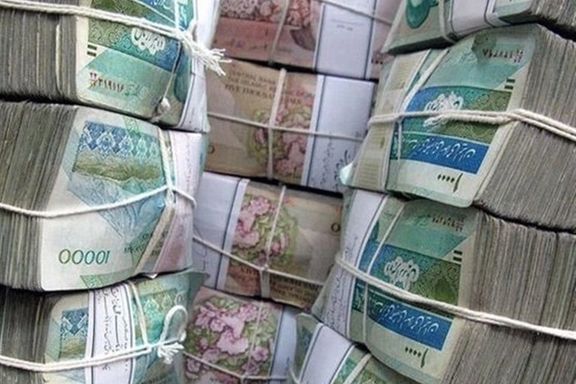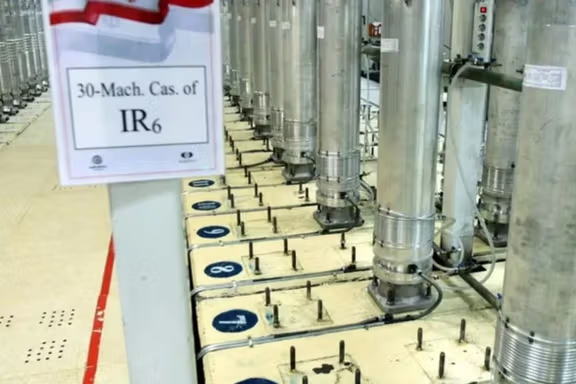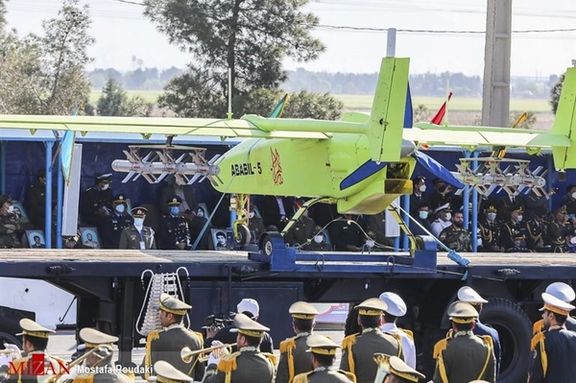Democratic Congressman Says JCPOA Is Not An Iran Policy

Another member of the Democratic Party has criticized the Biden administration for handling the threat posed by Iran, saying the 2015 nuclear agreement, JCPOA, is not an Iran policy.

Another member of the Democratic Party has criticized the Biden administration for handling the threat posed by Iran, saying the 2015 nuclear agreement, JCPOA, is not an Iran policy.
“Deal or not, we need a comprehensive strategy to lead in combating threats and to ensure Iran never has nukes”, he added, noting that he is glad that Secretary of State Antony Blinken affirmed that.
During a Foreign Relations Committee hearing on Tuesday, Senators from both sides of the aisle told Blinken to walk away from the talks with Iran.
But Democratic Senator Chris Murphy said Thursday that all the measures the United States has taken against Iran have only accelerated the country’s nuclear program.
The Connecticut senator, a supporter of JCPOA. said in a tweet on Thursday that “We tried crippling unilateral sanctions. We tried assassinations and sabotage. All that did was expedite their research program.”
The Biden administration has been holding talks for more than a year with Iran to revive the 2015 nuclear agreement, but the diplomatic process is at a standstill since March. Iran is demanding the removal of its Revolutionary Guard from the US list of terrorist organizations, something the administration has so far not accepted.

Iranian government debts have soared since 2018, when the US imposed tough sanctions on the Islamic Republic, International Monetary Fund’s figures show.
According to IMF’s Middle East and Central Asia economic outlook report, Iranian government’s net debt equaled to 41.5% of nominal GDP or $591 billion (based on official USD rate at 42,000 rials) in 2021. It was only $45 billion during 2000-2018 on average, or 11.8% of nominal GDP. The figure reached $214 billion in 2019 and increased to $351 billion in 2020.
During last three years only 70% of government’s annual budget has been realized due to US sanctions and plunging oil exports. Therefore, the government had to borrow a huge amount of money from the Central Bank, The National Development Fund and other internal financial entities to compensate the budget deficit.
Last year, the Supreme Audit Court of Iran announced that the government’s net debts reached 10,000 trillion (10 quadrillion) rials by May 2021, which equals $238 billion based on official USD rate or $37.5 billion based on USD rate in open markets (1 USD: 26,500 rial).
The Supreme Audit Court hasn’t released a new report, but last year it warned that government debt is increasing rapidly, rising 72% only during March-May 2021.
The heavy borrowing from the central bank leads to priniting money and a dangerous rise in liquidity since 2017, which in turn fuels inflation currently standing at more than 40 percent.
Iranian government spokesman Ali Bahadori Jahromi said on April 19 that export revenues, especially from oil shipments, have substantially increased, but the government had to allocate 100 trillion rials per month to pay off mature debts.
IMF put the country’s total exports (oil, non-oil and service) at $54 billion in 2020, but the figure increased to $91 billion in 2021 and expected to reach $140 billion during the current year.
IMF also predicted that the government’s net debts remain unchanged in 2022. International organizations to a large extent have to rely on official figures issued by Iran, as they have no representatives on the ground and do not visit the country.
Iran’s oil and gas condensate export declined from 2.5 million barrels per day (mb/d) in 2018 to 320,000 b/d in 2020 due to the US sanctions, but increased to around 670,000 b/d during last year, according Kpler data intelligence firm. The oil price has also been increasing from $41 in 2020 to above $100 now.
The Wall Street Journal reported on April 28 that Iran’s oil exports rose to 870,000 barrels a day in the first three months of 2022, up 30% from an average of 668,000 barrels a day in 2021, according to Kpler’s estimates.
Iran also exports around 450,000 b/d of petroleum products, which remained unchanged during last years, while oil products prices have also dramatically increased since 2018.
On the other hand, Iranian custom statistics indicate that the value of Iran’s non-oil exports increased by 41% to $48 billion during last fiscal year, ending March 20, due to significantly higher prices for petrochemicals and mine products.

The head of Iran’s atomic program said Friday that a third meeting would be held with the United Nations nuclear watchdog to discuss long-standing issues.
Tehran is due by June 21 to answer concerns raised by the International Atomic Energy Agency (IAEA) over work Iran carried out before 2003 in sites where the IAEA later detected traces of uranium. Some analysts have linked the traces to equipment supplied by Pakistani nuclear scientist AQ Khan.
“We have answered all the questions about the alleged locations,” Mohammad Eslami, head of the Iran’s Atomic Energy Organization said. “Negotiations are in progress.” Two meetings had been held, he added, since Iran and the agency in early March agreed the June 21 deadline.
IAEA chief Rafael Mariano Grossi in an interview with Associated Press Wednesday stressed that agency access to Iran’s nuclear program would be enhanced by the revival of the 2015 Iran nuclear deal, the JCPOA (Joint Comprehensive Plan of Action).
Year-long talks in Vienna, between Iran and six world powers, to revive the JCPOA have stalled since March. Grossi told AP that “political circumstance” needed to be overcome if the JCPOA were to be back in place and the previous level of IAEA monitoring restored.
Iran cutback the agency’s access in 2021 following the killing, widely attributed to Israel, of scientist Mohsen Fakhrizadeh, but had since 2019 been expanding its atomic program beyond JCPOA limits in response to the United States in 2018 leaving the JCPOA and imposing draconian sanctions.

A US official says the stalemate in the Vienna talks over the terrorist designation of Iran’s Revolutionary Guard is so sensitive that a compromise seems impossible and unrealistic.
The official familiar with the issue told Politico on Thursday that Washington is unwilling to include the removal of the IRGC from the US list of terrorist organizations since it falls beyond the contours of the original 2015 nuclear deal -- formally known as the Joint Comprehensive Plan of Action, or JCPOA.
“The US position has been that unless Iran agrees to take certain steps to assuage security concerns beyond the JCPOA, Washington will not lift the terror designation, which itself is beyond the JCPOA,” the unnamed source said.
He added that “the Biden administration is highly unlikely at this point to drop the designation in the context of the JCPOA talks” especially now that the administration is facing bipartisan political resistance at home and “given ongoing threats by the IRGC against [Americans]”.
The agreement that seemed imminent only two months ago hit a few hurdles along the way. First the Islamic Republic demanded that all sanctions – including over its missile and drone programs as well as human rights– be removed, then Russia - an original signatory of the JCPOA — demanded sanctions protections for any future business with Iran following its invasion of Ukraine. However, dropping the terrorist label of the IRGC seems like the tallest hurdle that has run the talks aground.

UN nuclear watchdog chief Rafael Mariano Grossi said Thursday that Iran’s new workshop for making machine parts for enriching uranium at Natanz was underground.
The International Atomic Energy Agency informed member states two weeks ago that Tehran had moved machines to a more secure setting from Karaj, west of Tehran, where its factory was sabotaged in June 2021 in an attack widely attributed to Israel.
Grossi told Associated Press Wednesday that the new plant, part of the larger site at Natanz where uranium is enriched, reflected the growth in Iran’s nuclear program. “The activity is not new, but the production lines, the production capacities, are being expanded,” he said.
Grossi said Wednesday that “political circumstance” should be overcome for effective UN monitoring of the Iran nuclear program to resume, stressing the agency’s work both in inspecting Iranian atomic facilities and in pursuing answers over past nuclear activities.
While the IAEA is not directly involved in Vienna talks to revive the 2015 Iran nuclear agreement, the JCPOA (Joint Comprehensive Plan of Action), Grossi has made clear the agency’s knowledge and supervision of Iran’s nuclear activities was undermined by the United States in 2018 leaving the JCPOA and Iran’s 2019 decision to reduce IAEA access and break JCPOA nuclear limits.
Tehran is due to satisfy the agency’s concerns by June 21 over work carried out before 2003 in sites where the IAEA later detected traces of uranium.

The United States House of Representatives passed legislation Wednesday requiring the president to sanction persons and entities over Iran's drone program.
The Stop Iranian Drones Act (SIDA), approved 424 against two, requires approval from the Senate and a presidential signature to become law.
The lawmakers behind the proposed legislation say it clarifies that US sanctions on Iran’s conventional weapons program under CAATSA include the supply, sale or of drones to and from Iran.
Farzin Nadimi, defense and security analyst in Washington DC, told Iran International Thursday that SIDA was mainly aimed at putting pressure on Iranian institutions and companies importing equipment and technologies used in building drones (unmanned aerial vehicles (UAVs). Nadimi claimed the legislation would help Washington prevent further development of Tehran's indigenous UAV industry.
Supporters of the legislation, including Congresswoman Elise Stefanik, say it will stop Iran or Iranian allies acquiring combat drones that could be used against US troops or US allies. Attacks by Iranian drones and the export of Iran’s drone technology pose a dire threat, SIDA supporters argue.
Alleging that Iran is "the world's leading exporter of terrorism," Stefanik said the world should know the United States will "use every tool at its disposal to cut off Iran’s access to deadly weapons.”
"Time and again, Iran has used UAVs to threaten global stability and US interests," Republican congressman Ted Deutch tweeted after the bipartisan bill passed the House. . “Congress countered this destabilizing behavior today.”
Important timing
Hossein Alizadeh, London-based international affairs analyst in London, told Iran International that the legislation’s timing was important in potentially adding new sanctions while negotiations to restore the 2015 nuclear deal are paused.
Iran's drone technology has already been transferred to some of its proxies, including to the Houthis in Yemen but the legislation shows that Republicans and Democrats are determined to prevent the expansion of Iran's military programs, he said.
Iran’s military drone program has expanded in recent years and UAV’s have been more frequently used in attacks in both on land and at sea. Several attacks in Iraq and at least one attack in Syria have targeted US forces.
SIDA was introduced at the US Senate Foreign Relations Committee December 2021, when a statement by the committee said it sought to amend the Countering America’s Adversaries Through Sanctions Act (CAATSA) to include as sanctionable any action intended to advance Iran’s UAV program.
“Iran’s UAV proliferation continues to threaten the US. and our allies throughout the Middle East. Whether the attack is launched by Iran, the Houthis, Iran-backed militia groups or any other Iran-sponsored entities, these attacks are intolerable,” Rep. Michael McCaul, one of the two Republican lawmakers who proposed the legislation, said after the legislation passed the House Foreign Affairs Committee in December.
Iranian officials have not commented on the proposed legislation. Admiral Mohammad Mousavi said early November that Iran's drones − some of which, including the ‘suicide drone’ Arash − had a range above 2,000km, further than Iran’s missiles. Mousavi told Sobh-e No daily that such drones could evade defense systems like Israel’s Iron Dome, although Saudi Arabia, the US, Iran, Israel, the Houthis, and Hezbollah have all downed UAVs.